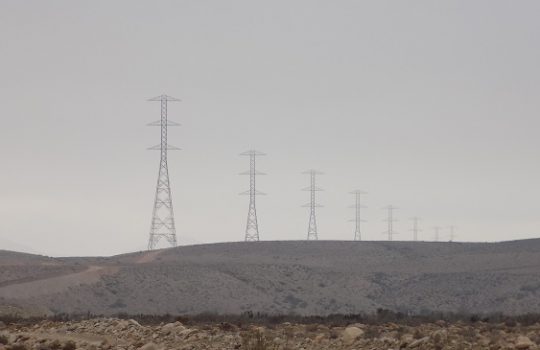
The National Electricity Coordinator’s diagnosis shows that the investment lag in this sector is still present.
Electricity transmission deficit moves to the southern part of the country
(Diario Financiero) The bottlenecks in electricity transmission capacity, which are currently concentrated in the northern part of the now defunct Central Interconnected System (SIC) and led to the construction of the controversial Cardones-Polpaico line, are not the only deficit in the electricity system, which has been operating in interconnected form for some months.
The capacity to respond to contingencies derived from natural phenomena or operational failures is at critical levels in several points of the network that supplies almost 100% of the country’s population.
The underinvestment that for years has dragged the electric transmission continues to show its effects, threatening the normal and correct operation of the main national electric highway.
According to the diagnosis of the Electric Coordinator The System Integrity Study 2018-2021, contained in the 2018-2021 System Integrity Study, states that at least eight substations (which allow injecting and withdrawing energy) are in critical condition to respond to contingencies due to events that are not infrequent, such as rains, winds or earthquakes, as well as human failures due to deficient maintenance, exceeded useful life or erroneous interventions.
This situation is concentrated in the south of the grid, between the regions of Maule and Los Lagos, with the Charrúa substation, located in Biobío, as the most sensitive point, which plays a key role, since a significant number of power plants are connected to it to inject energy.
“The study diagnoses from the current situation of existing facilities, which is a product of the evolution of the electricity system during the last 15 years approximately. The period 2018-2021 is analyzed to cover the final works of SIC-SING interconnection, to warn early on potential restrictions or risk situations for existing facilities, such as future projects, and that actions are taken in this regard,” explained in the Coordinator.
The situation is such that it is even anticipated that this area could present restrictions to the incorporation of new generation projects.
Need for investment
The problems warned by the entity must be solved by the owners of the facilities or through the expansion plan that the National Energy Commission (CNE), with the support of the Coordinator, proposes each year and which in its most recent version considers investments of US$ 2,684 million, costs that will be passed on in full to the demand, which includes both free and regulated customers.
The executive director of Electroconsultores, Francisco Aguirre, recalls that these charges appeared in the accounts transversely as of January or will appear retroactively and will gradually increase as these investments are executed.
Prior to 2013, the average investment for transmission did not exceed US$ 100 million for each expansion process, a level that, in addition to being insufficient, was late to meet supply and demand requirements, says Aguirre.
“This situation is not related to energy transmission deficit under normal operating conditions, but to the integrity of the transmission facilities to withstand and isolate safely, an event of insulation failure of the high voltage system, triggering a short circuit,” said the Coordinator, highlighting the sensitivity scenario for the supply that could occur.
Pedro Miquel, director of the consulting firm Systep, adds that the problem in the substations identified as critical occurs in both 2018 and 2021, because some will already be in this condition this year and others are about to be, which makes the situation evident.





